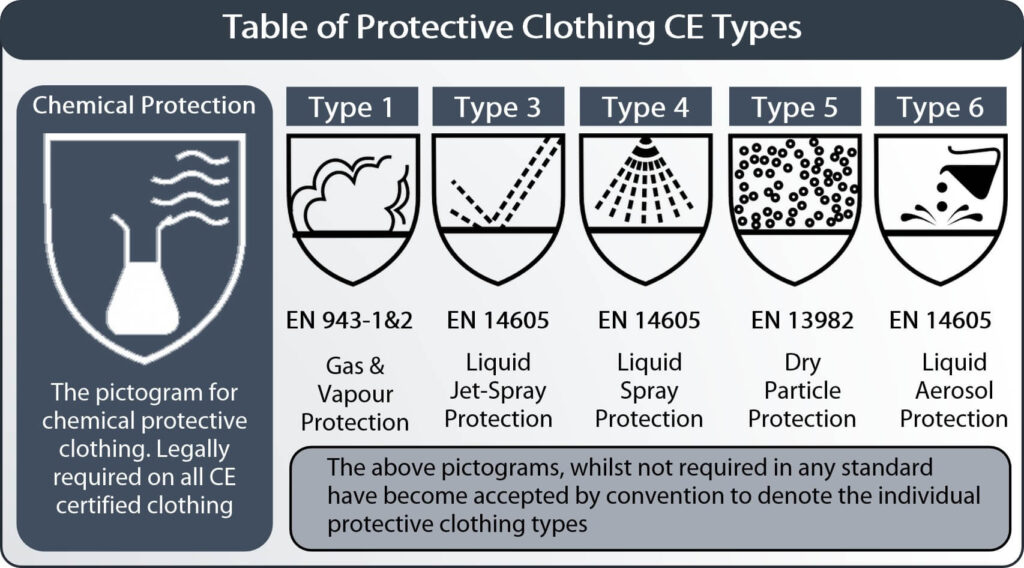EN 943-1 and EN 943-2 are two parts of the EN 943 standard that focus specifically on gas-tight protective clothing designed to offer protection against hazardous chemicals. Below is a detailed explanation of both parts:

EN 943-1:2015 – Gas-tight Chemical Protective Clothing for Industrial Use
This part outlines the requirements for gas-tight protective suits used in general industrial environments.
Key Points:
- Suit Classification:
- Type 1a: Fully encapsulating suits with a breathable air supply independent of the surrounding environment. These suits cover both the wearer and the breathing apparatus (BA).
- Type 1b: Encapsulating suits with a separate air supply, where the breathing apparatus is worn inside the suit.
- Type 1c: Suits with positive pressure maintained by a continuous flow of breathable air, ensuring gas-tight integrity.
- Protection Level:
- Gas-tight suits (Type 1) provide the highest level of protection against airborne chemical agents in both vapor and gaseous forms.
- The suits are designed for situations where hazardous chemicals, including toxic gases and vapors, are present.
- Materials and Testing:
- The suit materials are tested for chemical resistance, permeation (ability of chemicals to pass through the fabric), and degradation.
- Mechanical strength tests include resistance to tearing, puncturing, and abrasion.
- Seams, joints, and closures are tested to ensure they maintain the same gas-tight integrity as the primary material.
- Marking and Certification:
- Suits must be marked with relevant information, such as the CE marking, performance classes, and applicable warnings.
EN 943-2:2019 – Gas-tight Chemical Protective Clothing for Emergency Teams (ET)
This part is tailored for protective clothing used by emergency response teams, such as fire brigades and hazmat teams, who may be exposed to life-threatening chemicals.
Key Points:
- Suit Classification:
- Similar to EN 943-1, but with additional performance requirements to ensure reliability during emergency scenarios.
- The suits are classified as Type 1 ET (Emergency Teams), indicating they meet higher standards suitable for hazardous and unpredictable conditions.
- Enhanced Protection and Durability:
- Emergency suits must withstand more rigorous conditions, including higher mechanical stress, thermal resistance, and resistance to punctures and abrasions.
- The suits are designed to protect against a wide range of chemicals, including those that are highly toxic or corrosive.
- Comfort and Ergonomics:
- Given that emergency teams often work in extreme conditions, these suits are designed for better mobility and operational comfort, even during extended wear.
- Operational Tests:
- Additional tests are conducted to verify the suit’s performance in real-world emergency situations, ensuring that responders can move, perform tasks, and stay protected throughout the incident.
Comparison and Application of EN 943-1 and EN 943-2:
- EN 943-1 is more focused on industrial environments where workers are exposed to hazardous chemicals regularly. These suits are generally used in controlled settings.
- EN 943-2 suits are designed for more dynamic and unpredictable environments, where first responders may face a wide range of hazards in emergencies.
Summary:
Both EN 943-1 and EN 943-2 provide high-level protection with gas-tight suits, but EN 943-2 sets stricter requirements for emergency teams due to the increased risks and variability in emergency situations. These standards ensure that users are protected against exposure to hazardous gases, vapors, and aerosols in industrial and emergency settings.

